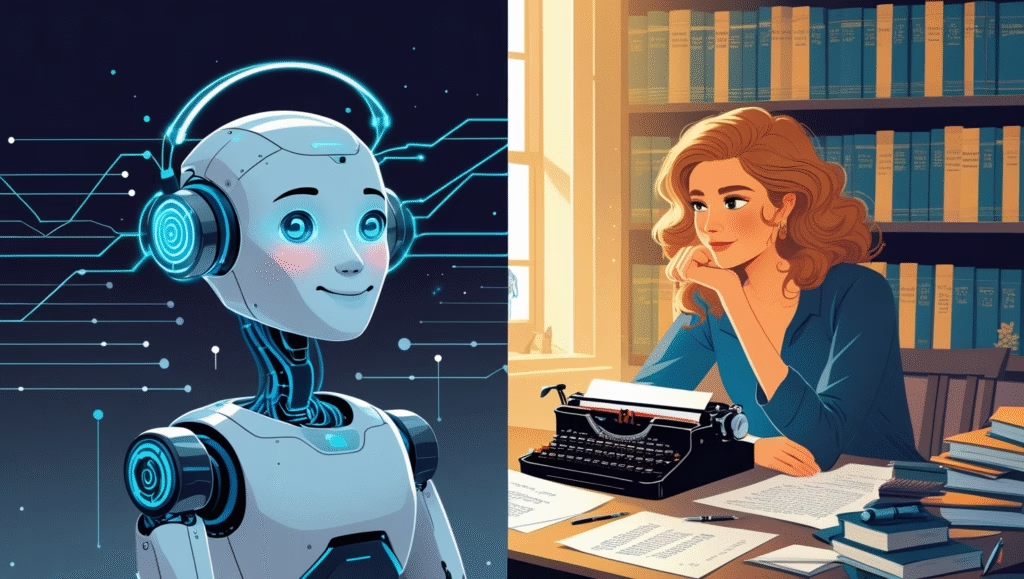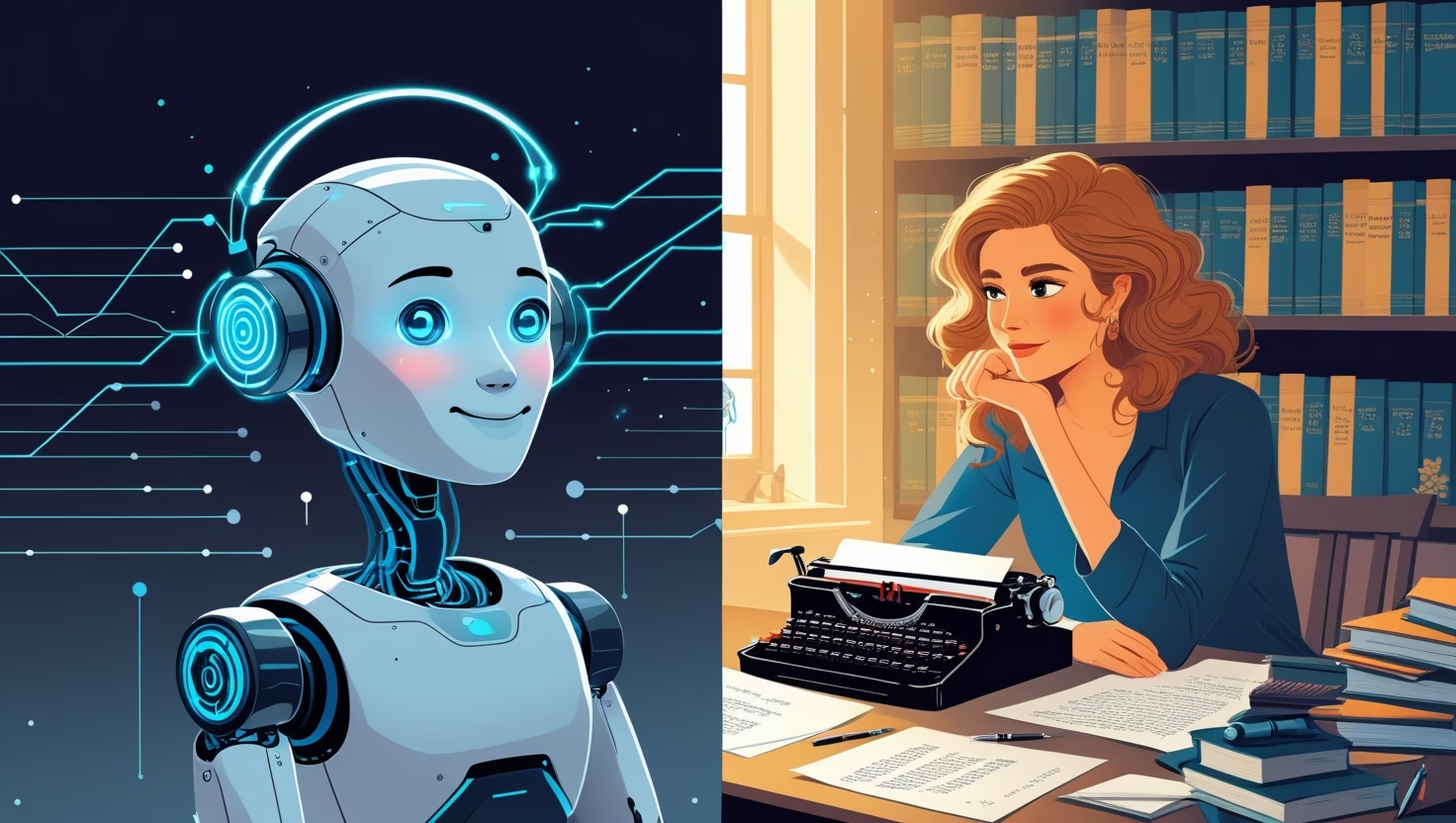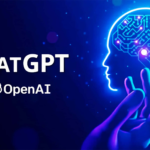Introduction
In the rapidly evolving landscape of content creation, the debate between AI and human writers has become increasingly pertinent. With advancements in artificial intelligence, machines are now capable of producing content that closely mimics human writing. However, the question remains: can AI truly replicate the depth, creativity, and nuance of human writers? This article delves into a comprehensive comparison between AI and human writers, exploring their strengths, weaknesses, and the future of content creation.

Understanding AI Writers
What Are AI Writers?
AI writers are software programs powered by artificial intelligence and natural language processing (NLP). These tools analyze vast datasets to predict and generate human-like text. They can write emails, blogs, social media posts, and even poetry. The real magic lies in how they learn and improve over time.
Unlike traditional templates or rigid scripts, AI writers generate content dynamically. They use probability to predict the next word in a sentence based on prior inputs. This means they can adapt tone, topic, and even style if prompted correctly.
How AI Writing Tools Work
Here’s a quick breakdown of how these tools function:
- Input: The user provides a prompt or topic.
- Processing: The AI references its training data (billions of text samples).
- Output: It predicts and writes human-like sentences based on the input.
Most AI models, like GPT-4, are trained on a mixture of licensed and publicly available text. This allows them to mimic everything from Shakespearean sonnets to technical manuals.
They use “tokens” (bits of words) to process and understand language. The smarter the model, the better it is at structuring coherent, relevant content. However, it’s still limited by what it knows—and it doesn’t “understand” language the way humans do.
Popular AI Writing Tools in 2025
Let’s look at a few leading tools dominating the content space:
- ChatGPT (OpenAI): Versatile and powerful. Great for everything from casual blog posts to technical documentation.
- Jasper AI: Popular for marketing content. Comes with pre-built templates and tone adjustment features.
- Writesonic: Known for SEO-friendly blogs and landing pages.
- Copy.ai: Excellent for social media content and short-form writing.
- Sudowrite: Designed specifically for creative writing and fiction.
These tools are shaping the future of writing—but they’re not perfect. They still require human oversight for quality, accuracy, and alignment with brand voice.
Understanding Human Writers
The Creative Process of Human Writers
Human writers aren’t just stringing words together. They’re crafting experiences. The process often starts with brainstorming—searching for the perfect angle, headline, or hook that resonates emotionally. Then comes research, drafting, editing, and refining.
Writers use intuition, experience, and cultural awareness to guide their words. Whether it’s capturing brand personality or empathizing with readers’ pain points, humans bring soul into content. That’s something algorithms can’t replicate—not yet, at least.
Every human writer has a unique voice. Their tone can shift from playful to persuasive, sarcastic to sympathetic. This flexibility stems from lived experiences, education, and an innate understanding of human emotion.
Strengths of Human Writers
Why are human writers still thriving in an AI-heavy world? Here’s why:
- Creativity: They invent ideas, create analogies, and tell stories that connect.
- Empathy: They understand pain points, motivations, and emotional triggers.
- Contextual Awareness: They read between the lines, infer tone, and adjust based on situation or audience.
Writers also understand subtleties—like humor, irony, or cultural nuance—that AI often fumbles. For example, an AI might write, “break a leg” literally, while a human knows it’s a theatrical good-luck charm.
Limitations and Challenges
But humans aren’t perfect either. They can be:
- Slow: Crafting high-quality content takes time.
- Inconsistent: Tone, grammar, or style may vary day to day.
- Expensive: Professional writers charge for their time and expertise.
Still, many would argue that the depth and authenticity of human writing make the investment worthwhile.
Key Differences Between AI and Human Writers
Writing Style and Tone
When comparing AI and human writing styles, you’ll notice a few things:
- AI tends to be formulaic. It relies on patterns and often repeats structures.
- Humans inject personality. From sarcasm to sentiment, they add layers AI can’t fake well.
AI can simulate tone—serious, friendly, formal—but it doesn’t feel tone. That’s why AI-generated content can sometimes seem off or robotic, especially in emotionally charged topics.
Creativity and Originality
Creativity is where human writers shine. They can:
- Develop unique perspectives.
- Craft compelling narratives.
- Use metaphors and analogies effectively.
AI, on the other hand, generates content based on existing data. It doesn’t “think” or “feel” but predicts what comes next based on patterns. This limits its ability to produce truly original content.
Grammar, Syntax, and Consistency
AI excels in grammar and syntax. It’s programmed to follow rules and maintain consistency. However, it can sometimes misinterpret context, leading to awkward phrasing.
Human writers might make occasional grammatical errors, but they can adapt their writing style to suit different contexts and audiences, something AI struggles with.
SEO Performance: AI vs Human Writers
Keyword Optimization
AI tools are adept at keyword optimization. They can:
- Identify relevant keywords.
- Integrate them seamlessly into content.
- Ensure optimal keyword density.
Human writers can also optimize for keywords but may require more time and research. However, they can ensure that keywords are integrated naturally, maintaining the content’s readability and flow.
On-Page SEO Structure
AI can generate content with proper headings, subheadings, and meta descriptions. It follows best practices for on-page SEO, ensuring content is structured for search engines.
Human writers, with SEO knowledge, can do the same but might bring a more nuanced approach, tailoring content structure to the target audience’s preferences.
Readability and User Engagement
While AI can produce readable content, human writers excel in creating engaging narratives that resonate with readers. They can:
- Use storytelling techniques.
- Incorporate humor and emotion.
- Build a connection with the audience.
This human touch often leads to higher user engagement and longer time spent on the page.
Content Quality and Accuracy
Factual Reliability
AI relies on the data it’s trained on. If that data is outdated or incorrect, the AI might produce inaccurate content. It doesn’t have the ability to fact-check or verify information.
Human writers can research, cross-reference sources, and ensure the accuracy of the information they present.
Nuance and Contextual Understanding
AI struggles with nuance and context. It might misinterpret idioms, cultural references, or sarcasm. Human writers, with their cultural and emotional intelligence, can navigate these complexities effectively.
Error Rate and Correction
AI can produce content quickly, but it might contain errors that go unnoticed without human oversight. Human writers can proofread and edit their work, ensuring higher quality and fewer mistakes.
Ethical Considerations
Plagiarism Concerns with AI
AI-generated content can sometimes closely resemble existing content, raising plagiarism concerns. It’s essential to use plagiarism checkers when using AI tools to ensure originality.
Transparency and Disclosure
When using AI-generated content, transparency is crucial. Readers should be informed if content is produced by AI, maintaining trust and credibility.
Impact on the Writing Job Market
The rise of AI in content creation has sparked concerns about job displacement among writers. While AI can handle repetitive tasks, human writers bring creativity and critical thinking that machines can’t replicate. The future may see a shift in the writer’s role, focusing more on strategy and oversight.
Cost and Efficiency Comparison
Speed of Output
AI can generate content in seconds, making it ideal for tasks requiring quick turnaround. Human writers, while slower, provide depth and quality that AI can’t match.
Cost of Production
AI tools often come with subscription fees, but they can produce large volumes of content at a lower cost. Hiring human writers can be more expensive, but the investment often results in higher-quality content.
Return on Investment (ROI)
While AI offers cost savings and efficiency, human-written content often yields better engagement and conversion rates, leading to a higher ROI in the long run.
Use Cases Best Suited for AI
- Product Descriptions: AI can generate concise and consistent product descriptions quickly.
- Basic SEO Content: For straightforward topics, AI can produce SEO-optimized content efficiently.
- Data-Driven Summaries: AI excels at summarizing data and generating reports.
Use Cases Best Suited for Human Writers
- Storytelling and Emotional Appeal: Human writers can craft compelling narratives that resonate emotionally.
- Expert Thought Leadership: For in-depth analysis and unique perspectives, human expertise is invaluable.
- Deep-Dive Research Articles: Complex topics requiring extensive research are best handled by human writers.
Hybrid Approach: Best of Both Worlds
Combining AI and human writing can yield optimal results. AI can handle repetitive tasks and initial drafts, while human writers refine the content, adding creativity and nuance.
Case Studies and Real-World Examples
- Major Brands Using AI Writing: Companies like Forbes have integrated AI tools for content creation, enhancing efficiency.
- Freelancers and Agencies Leveraging AI: Many content creators use AI to streamline their workflow, focusing their efforts on strategy and creativity.
- Results and Lessons Learned: Businesses report increased productivity and content output when combining AI tools with human oversight.
Future of Content Writing
The future of content writing lies in collaboration between AI and human writers. As AI technology advances, it will handle more complex tasks, but the human touch will remain essential for creativity, empathy, and critical thinking.
Conclusion
The debate between AI and human writers isn’t about choosing one over the other. Instead, it’s about leveraging the strengths of both. AI offers speed and efficiency, while human writers bring depth and creativity. By combining these strengths, content creators can produce high-quality, engaging, and effective content.
FAQs
Q1: Is AI better than human writers?
AI excels in speed and consistency, but human writers offer creativity and emotional depth. The best choice depends on the content’s purpose.
Q2: Can AI create original content?
AI generates content based on existing data patterns. While it can produce unique combinations, true originality stems from human creativity.
Q3: Will AI replace content writers?
AI will automate certain writing tasks, but human writers will continue to play a crucial role in content creation, especially for complex and creative projects.
Q4: How can businesses choose between AI and humans?
Assess the content’s




